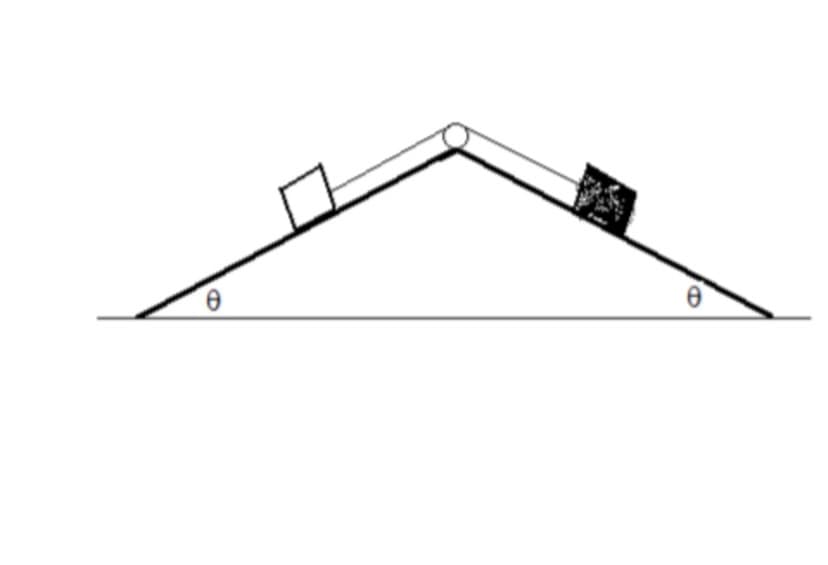wo blocks are positioned on surfaces, each inclined at the same angle of 41.9 degrees with respect to the horizontal. The blocks are connected by a rope which rests on a frictionless pulley at the top of the inclines as shown, so the blocks can slide together. The mass of the black block is 3.95 kg, and the coefficient of kinetic friction for both blocks and inclines is 0.310. Assume static friction has been overcome and that everything can slide. What is must be the mass of the white block if both blocks are to slide to the RIGHT at a constant velocity?
please answer all :))
1. Two blocks are positioned on surfaces, each inclined at the same angle of 41.9 degrees with respect to the horizontal. The blocks are connected by a rope which rests on a frictionless pulley at the top of the inclines as shown, so the blocks can slide together. The mass of the black block is 3.95 kg, and the coefficient of kinetic friction for both blocks and inclines is 0.310. Assume static friction has been overcome and that everything can slide. What is must be the mass of the white block if both blocks are to slide to the RIGHT at a constant velocity?
2. Two blocks are positioned on surfaces, each inclined at the same angle of 57.3 degrees with respect to the horizontal. The blocks are connected by a rope which rests on a frictionless pulley at the top of the inclines as shown, so the blocks can slide together. The mass of the black block is 7.09 kg, and the coefficient of kinetic friction for both blocks and inclines is 0.510. Assume static friction has been overcome and that everything can slide. What is must be the mass of the white block if both blocks are to slide to the LEFT at a constant velocity?
3. Two blocks are positioned on surfaces, each inclined at the same angle of 56.6 degrees with respect to the horizontal. The blocks are connected by a rope which rests on a frictionless pulley at the top of the inclines as shown, so the blocks can slide together. The mass of the black block is 6.29 kg, and the coefficient of kinetic friction for both blocks and inclines is 0.210. Assume static friction has been overcome and that everything can slide. Wha

Trending now
This is a popular solution!
Step by step
Solved in 3 steps with 1 images






